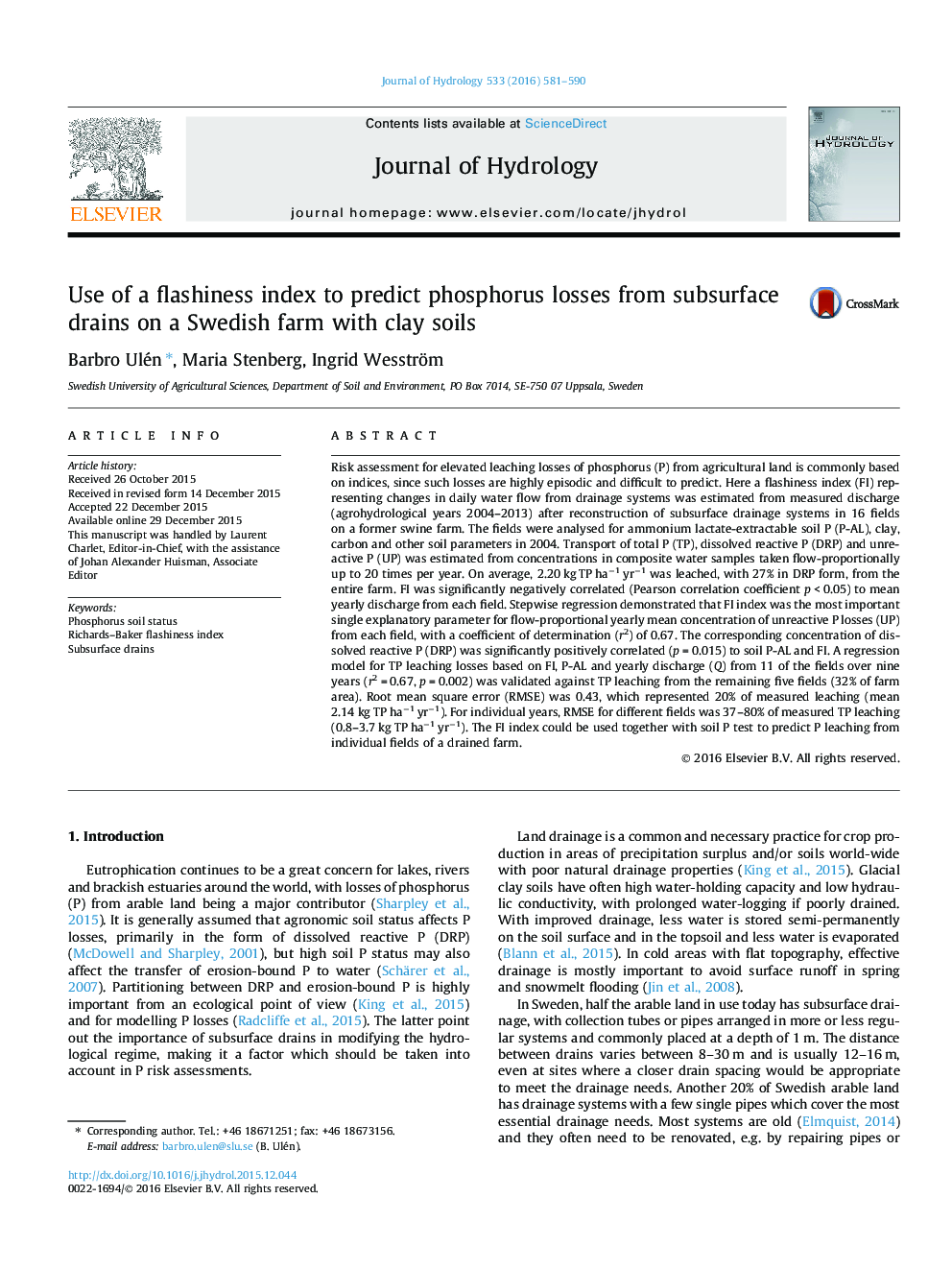| Article ID | Journal | Published Year | Pages | File Type |
|---|---|---|---|---|
| 6410558 | Journal of Hydrology | 2016 | 10 Pages |
â¢A water flow flashiness index (FI) was calculated for 16 different fields on a farm.â¢The FI index was negatively correlated to drain discharge (mm yrâ1) from fields.â¢The FI index predicted leaching of unreactive phosphorus (P) in the 9-year study.â¢Dissolved reactive P concentration was correlated with soil P status (P-AL value).â¢The FI index, together with P-AL, was used in a validated model for total P leaching.
Risk assessment for elevated leaching losses of phosphorus (P) from agricultural land is commonly based on indices, since such losses are highly episodic and difficult to predict. Here a flashiness index (FI) representing changes in daily water flow from drainage systems was estimated from measured discharge (agrohydrological years 2004-2013) after reconstruction of subsurface drainage systems in 16 fields on a former swine farm. The fields were analysed for ammonium lactate-extractable soil P (P-AL), clay, carbon and other soil parameters in 2004. Transport of total P (TP), dissolved reactive P (DRP) and unreactive P (UP) was estimated from concentrations in composite water samples taken flow-proportionally up to 20 times per year. On average, 2.20 kg TP haâ1 yrâ1 was leached, with 27% in DRP form, from the entire farm. FI was significantly negatively correlated (Pearson correlation coefficient p < 0.05) to mean yearly discharge from each field. Stepwise regression demonstrated that FI index was the most important single explanatory parameter for flow-proportional yearly mean concentration of unreactive P losses (UP) from each field, with a coefficient of determination (r2) of 0.67. The corresponding concentration of dissolved reactive P (DRP) was significantly positively correlated (p = 0.015) to soil P-AL and FI. A regression model for TP leaching losses based on FI, P-AL and yearly discharge (Q) from 11 of the fields over nine years (r2 = 0.67, p = 0.002) was validated against TP leaching from the remaining five fields (32% of farm area). Root mean square error (RMSE) was 0.43, which represented 20% of measured leaching (mean 2.14 kg TP haâ1 yrâ1). For individual years, RMSE for different fields was 37-80% of measured TP leaching (0.8-3.7 kg TP haâ1 yrâ1). The FI index could be used together with soil P test to predict P leaching from individual fields of a drained farm.
